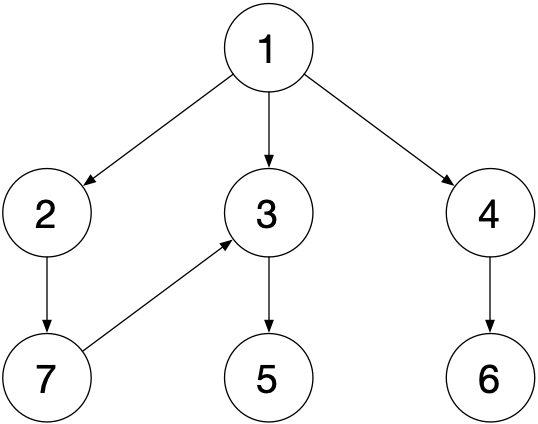1
2
3
4
5
6
7
8
9
10
11
12
13
14
15
16
17
18
19
20
21
22
23
24
25
26
27
28
29
30
31
32
33
34
35
36
37
38
| public class DFS {
public static void dfs(GraphNode node) {
if (node == null) return;
Stack<GraphNode> stack = new Stack<>();
HashSet<GraphNode> set = new HashSet<>();
stack.push(node);
set.add(node);
System.out.print(node.value + " ");
while (!stack.isEmpty()) {
GraphNode cur = stack.pop();
for (GraphNode next : cur.nexts) {
if (!set.contains(next)) {
stack.push(cur);
stack.push(next);
set.add(next);
System.out.print(next.value + " ");
break;
}
}
}
}
public static void main(String[] args) {
Integer[][] nodes = {
{1, 1, 2},
{1, 1, 3},
{1, 1, 4},
{1, 2, 3},
{1, 2, 7},
{1, 3, 5},
{1, 4, 6},
{1, 7, 3}
};
Graph graph = GraphBuilder.createGraph(nodes);
dfs(graph.nodes.get(1));
}
}
|
